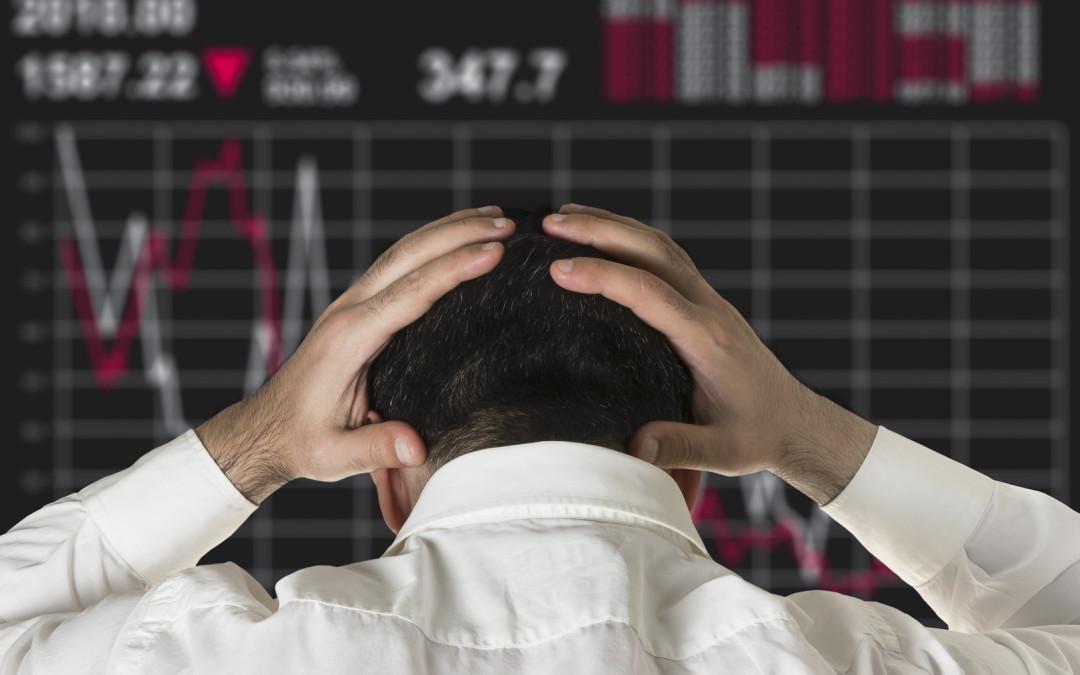The Rally
You are probably quite pleased with yourself. The markets have rallied and no doubt your selection of stocks and funds have moved higher with it.
The introduction of quantitative easing in Europe and Japan alongside continued easy monetary policy in the US and UK has fuelled equity markets over the past three years. Most major equity indices have consistently broken to fresh highs and portfolios have grown.
Most major stock indexes are within 5% of all time highs and haven’t suffered a major correction for years.
The markets have been spoon fed liquidity by central banks leading to complacency among investors who have forgotten that stock markets can go down.
The Fed
The Federal Reserve is on the verge of hiking its base interest rate, the fallout could be extremely serious for equity markets if there is the perception that Janet Yellen is withdrawing easy monetary policy before the economy is strong enough.
Take the example of the ‘taper tantrum’ in 2013 when then Federal Reserve Chairman, Ben Bernanke, uttered the word ‘taper.’
Equity markets collapsed, the FTSE 100 fell over 850 points in the space of a month.
Bernanke was referring to a reduction in the amount of bonds that would be purchased through the Federal Reserve’s so called ‘QE3’ programme.
In 2013 the mere suggestion of reducing the stimulus caused a market rout, this time the move will be to tighten the supply of money.
The Federal Reserve raising rates may be the catalyst for a market correction but there are various other events, which if materialise, could lead to a correction. A Chinese stock bubble, failure of Eurozone QE, a war in the Middle East, a Black Swan event or the Bank of England raising rates could all trigger a sharp downturn in markets.
The Sell Off
Markets hate uncertainty and uncertainty is bred from a lack of clarity and knowledge.
It is highly likely that most have not even considered the factors that will cause the next crash. It is also likely that those currently lacking a strategy to protect their wealth will take a long time to react.
Unfortunately when markets fall, they fall faster and further than most expect.
A good way of understanding stock markets is to think of them in terms of elevators and stairs.
Markets rise like long flight of winding stairs, and they fall like an elevator crashing down a shaft; they go down much quicker than they come up.
Needless to say it pays to be prepared for such an event.
Move into cash
Cash is king. In times of volatility, sometimes the best option is to liquidate the portfolio and await cheaper prices and higher stability.
Exchange Traded Funds
There are numerous Exchange Traded Funds that offer investors the opportunity to profit from a plunge in equity prices. These can be focussed on whole indexes or a selected basket of stocks.
Deutsche Bank offer DB X-Trackers FTSE 100 Short Daily ICITS ETF (LON:XUKS), designed to reflect the opposite movements of the FTSE 100 on a daily basis. This means that the share price of this ETF will rise if the FTSE 100 falls.
Some ETFs enable investors to gain downside ‘short’ exposure on a specific sector.
ProShares Short Oil & Gas (NYSE:DDG) tracks the Dow Jones U.S. Oil & Gas index which contains around 95 companies such ExxonMobil, Chevron and ConocoPhillips. If this basket of 95 shares is to fall, the price of ProShares Short Oil & Gas will rise.
If you hold a selection of global oil companies and don’t wish to sell, trading this ETF will provide a hedge.
For further details on ETFs, visit our Tips & Guides section and select an Exchange Traded Funds trading guide.
Contracts for Difference
Contracts for Difference (CFDs) give investors the ability to go short on individual shares or entire indexes. A popular market to trade is the FTSE 100. Depending on the broker you are given the opportunity to trade in contracts or lots which give you exposure to the underlying market.
For example, a contract may give you exposure where you make or lose £10 per 1 point of the index. If you open 1 contract at 7050 and it falls to 6950, a difference of 100 points, you could make £1000, but if the market rises to 7150, you could lose that £1000.
You can also short sell individual shares. When the market falls there are stocks that tend to move more quickly than the rest of the market, these are known as higher ‘beta’ stocks. Moreover depending on the reason for the sell-off, certain sectors will also lead the way down.
The catalyst for a downturn could be attributable to China for instance, mining companies are highly impacted by Chinese demand and could see a sharp downturn in such an event. Shorting companies like Anglo American, Rio Tinto or BHP Billiton could be a prudent decision in this situation.
Generally CFDs do not have an expiry date so you can keep them open for as long as you wish. CFDs do incur a small overnight financing charge which is around 3% +/- Libor. Commissions and spreads vary from broker to broker, our comparison table will give you more information.
Options
Put Options give investors the ability to profit in the case of a market downturn. Similar to CFDs, options are traded in contracts, however they are fundamentally different as they have expiry dates and strike prices.
Buying a put option is considered as an insurance policy by investors as you pay a ‘premium’ to protect your portfolio. The premium paid plus commissions is the total risk the investor will take on.
Please visit our Tips & Guides section to access an Options trading guide.
Diversify
Diversification is always key when making investments and having a broad range of asset classes that aren’t highly correlated will protect your overall portfolio in the case of an equity sell off. A portfolio that is spread across Bonds, Forex, Commodities as well as Equities will be far better than one solely in equities.




